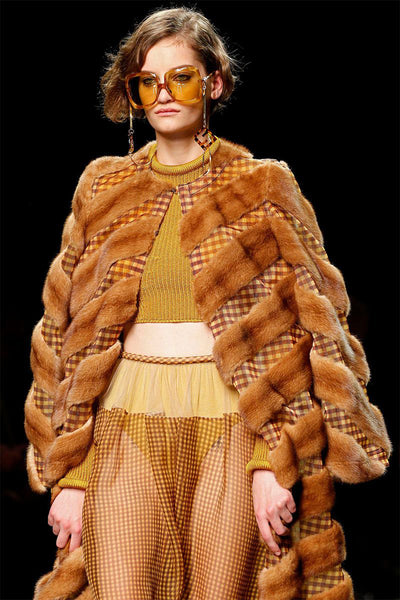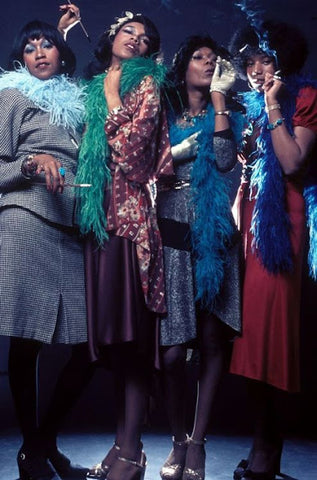National Retro Day
It gets thrown around a lot in the vintage world, but what does it mean? For #nationalretroday we are sharing the history of the term ‘retro’!
In French, the word ‘rétro’ is an abbreviation of ‘rétrospectif’ and came into use during the 1970s when a re-evaluation of France’s role in WWII, and the conduct of its civilians, was taking place. Rétro soon became used to describe French fashions from the same WWII period. Shortly afterwards, ‘retro’ became used in English to describe older but relatively recent fashions/ items that were no longer up to date. It is indicative of something that consciously resembles something from a previous time period or new items that are derivative of the past.

It suggests an unsentimental nostalgia, describing something modern in relative terms but no longer current. It can really only be applied to clothing derivative of or from the few decades preceding it. It can be adopted ironically in a style that is fashionably old-fashioned.
 Matt Chase @doble_entendre for Wall Street Journal @wsj
Matt Chase @doble_entendre for Wall Street Journal @wsj
Vintage clothing, on the other hand, is clothing that was produced between 20 and 100 years ago. Anything older than this is considered antique. However, an item can be both retro and vintage. Furthermore, vintage only refers to something that is tangible, but retro can refer to a concept such as an attitude or a hairstyle. It doesn’t refer to a time period or allude to the age of an item.
There are many modern retailers today specializing in creating clothing that is reminiscent of fashion from another period i.e new ‘retro’ clothing that might look vintage.
 @flarestreet
@flarestreet
Retro is also a prominent element of the fashion cycle as trends from the past are brought back to fore and updated.
The high end vintage resale website Vestiaire Collective had this to say about retro trends in fashion:
“In 2021, creative directors for top fashion brands often rely on retro trends in their collections. It’s a way of taking the very best ideas from previous decades and putting a modern spin on them. Just take Fendi, who in the spring of 2020 exhibited a gorgeous collection full of psychedelic patterns which was inspired by the youthful zeitgeist of the 1970s. Recently, several designers chose the 1960s for their throwback collections. Miu Miu, Louis Vuitton and Marc Jacobs all gave a nod to flower power using big floral patterns and bold colours in their Spring/Summer 2020 collections. And Stella McCartney went full ‘90s with a heavy use of denim in her S/S 2020 collection.”
 Fendi S/S 2020
Fendi S/S 2020
 Fendi S/S 2020
Fendi S/S 2020
Since the 70s at least, we have seen the 20/30 year nostalgia trend cycle go round and round, with designers utilizing retro elements in their work. So, in this way, retro can reflect the cyclical nature of fashion but it can also be a nostalgic novelty built into someone’s personal style.

Rhoda Morgenstern in 1930s style in the 1970s

1980s does 1940s
‘Evergreen’ pieces like trench coats, cashmere sweaters and Levi 501’s can’t be be considered retro because they haven’t stopped being current for decades. So, a pair of Chuck Taylor Converse shoes from the 60s aren’t retro but they are vintage.
A New-Look style dress made in the 1980s was retro back then and it is both retro and vintage today. ‘80s does 40s’ or ‘80s does 50s’ was a popular retro trend when the word itself was first coming into widespread use.

Lady Gaga wearing 80s style clothing the 2010s
Do you use the term retro when sourcing clothing? If you’re a seller, do you use the term retro in your descriptions?
 The Pointer Sisters wearing 20s/30s style clothing in the 70s
The Pointer Sisters wearing 20s/30s style clothing in the 70s
